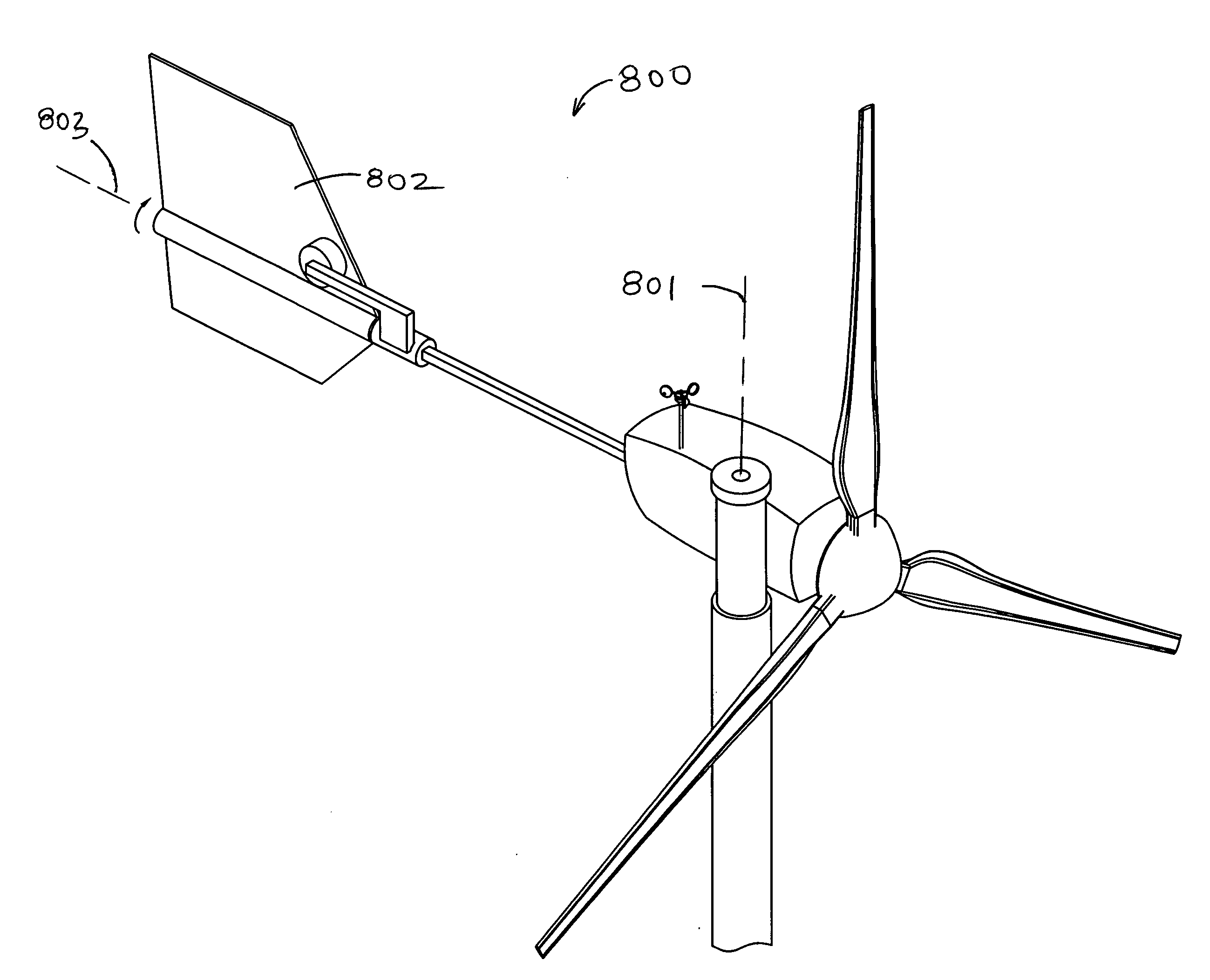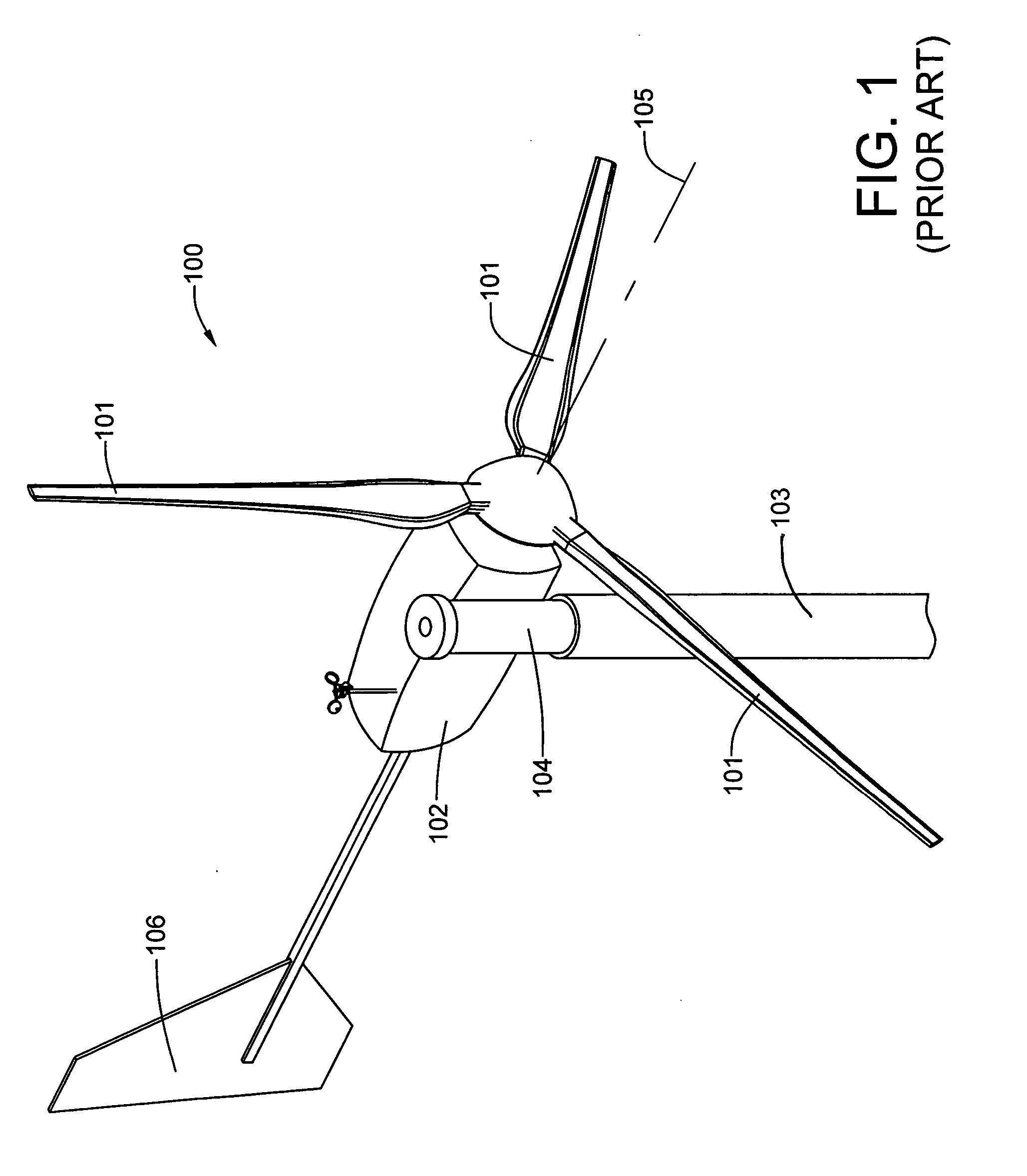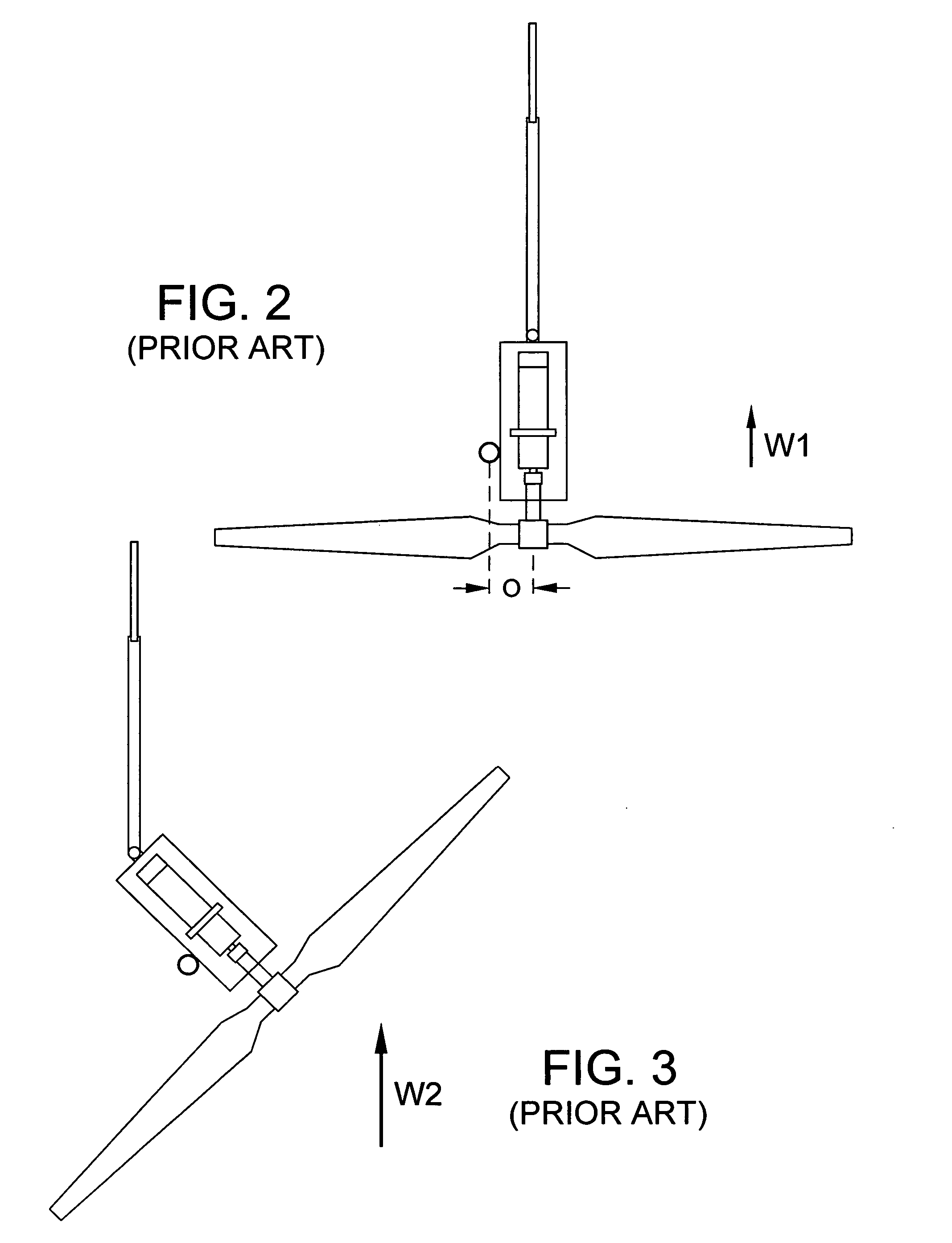Furling wind turbine
a wind turbine and wind power technology, applied in the field of furling wind turbines, can solve the problem that the centrifugal brake must be much larger
- Summary
- Abstract
- Description
- Claims
- Application Information
AI Technical Summary
Benefits of technology
Problems solved by technology
Method used
Image
Examples
Embodiment Construction
[0022] A latching mechanism is employed in a furling wind turbine to keep the tail from furling during normal operation, but allowing the tail to release as a means of rotor aerodynamic braking. The latch may be actively or passively controlled. Using active control sensing, the rotor speed is sensed either directly or indirectly by, for example, measuring the current generated. If the sensed value exceeds a set value, the latch is disengaged, allowing the tail to furl and moving the rotor oblique to the direction of the wind. Using passive control, the latch disengages under the action of rotor aerodynamic forces or moments.
[0023] For active furling control, the tail may be latched with an electromagnet. When rotor speed reaches a set value that equates a safe operational limit, the electromagnet is released. In addition, a fault condition will automatically release the electromagnet. Active furling control may also be implemented using a stepper motor to optimize the furling angl...
PUM
 Login to View More
Login to View More Abstract
Description
Claims
Application Information
 Login to View More
Login to View More - R&D
- Intellectual Property
- Life Sciences
- Materials
- Tech Scout
- Unparalleled Data Quality
- Higher Quality Content
- 60% Fewer Hallucinations
Browse by: Latest US Patents, China's latest patents, Technical Efficacy Thesaurus, Application Domain, Technology Topic, Popular Technical Reports.
© 2025 PatSnap. All rights reserved.Legal|Privacy policy|Modern Slavery Act Transparency Statement|Sitemap|About US| Contact US: help@patsnap.com



